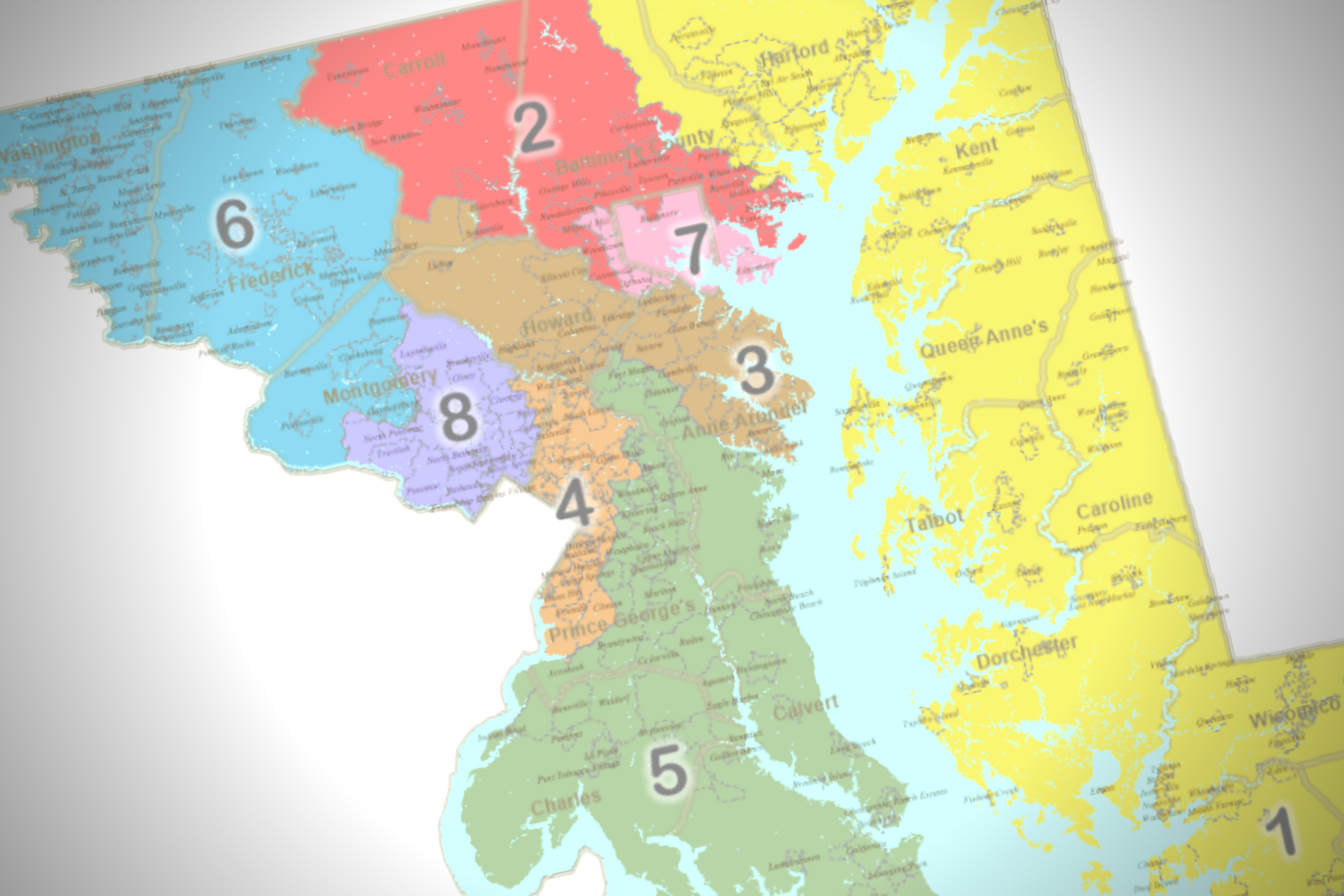What’s in Store for Future Congressional Redistricting Cycles in Maryland?

Maryland congressional mapmaking in 2022 was the most unusual in recent memory, and the effects of a successful court challenge to lawmakers’ original map could echo through future rounds of redistricting.
Challenges to the Maryland General Assembly’s congressional map played out for the first time in state rather than federal courts — and a provision historically applied to state legislative districts was also applied to congressional districts. But the extent to which Senior Judge Lynne A. Battaglia’s historic ruling will affect future redistricting cycles remains to be seen.
In striking down the General Assembly’s map last month, Battaglia found that Article III, Section 4 of the Maryland Constitution — which requires that “legislative districts” be compact and respect natural and political boundaries — applied to congressional districts. She also found that the map lawmakers approved during a December session was an “extreme partisan gerrymander” and violated provisions in the Maryland Declaration of Rights about free speech, equal protection and “free and frequent” elections.
Battaglia ordered the General Assembly to redraw the map and lawmakers did so within a week, but state officials also appealed her ruling to the Court of Appeals.
But before the Court of Appeals could take up the case and issue a precedent-setting ruling, the parties agreed to settle it and Gov. Lawrence J. Hogan Jr. (R) signed the new map into law, effectively ending the redistricting dispute. Now, the extent to which Battaglia’s ruling and the settlement will affect the General Assembly’s approach to redistricting in the future remains unclear.
Michael Li, senior counsel for the Brennan Center for Justice’s Democracy Program and a redistricting expert, said Battaglia’s ruling isn’t binding on other courts — but could offer “guidance” to lawmakers.
“It’ll be a marker,” Li said.
The challenges to congressional maps in Maryland — and other states — were heard in state courts rather than federal courts this year, after the U.S. Supreme Court opted not to weigh in on state-level redistricting disputes. Battaglia called the challenges to Maryland’s congressional map a “case of first impression” because similar challenges hadn’t played out in state courts before.
The Supreme Court ruled in the 2019 Rucho v. Common Cause case that federal courts can’t review allegations of partisan gerrymandering. That decision included judgment in the Benisek v. Lamone case that dealt with Maryland’s 6th Congressional District. That decision pushed congressional map lawsuits into state court, where challengers have now had success across the country.
Congressional maps have been thrown out following challenges in state courts in Ohio, North Carolina and other states since that Supreme Court ruling. And even before the Supreme Court weighed in, the Pennsylvania Supreme Court found that the state’s 2011 congressional map violated the state constitution’s requirement for “free” elections — similar to a provision in Maryland’s Declaration of Rights that Battaglia said was violated by the General Assembly’s original map.
The North Carolina Supreme Court likewise ruled earlier this year that congressional and legislative maps drawn by that state’s legislature violated the state constitution’s requirement that elections be “free.”
“If there is going to be a remedy … it’s going to be in state court,” Li said of partisan gerrymandering cases.
Del. Anne Healey (D-Prince George’s), chair of the House Rules and Executive Nominations Committee that approved Maryland’s redistricting plans, questioned whether this unconventional round of mapmaking will set a precedent in Maryland.
“It doesn’t set a precedent at all,” Healey said. “It’s just one judge’s opinion.”
Because the case was settled and never went to the Court of Appeals, how Battaglia’s ruling would’ve played out before the high court remains unknown, Healey said.
“Apparently, she came up with something that had never been considered before,” Healey added. “So we don’t know whether her interpretation would’ve been ratified by the Court of Appeals.”
Del. Neil C. Parrott (R-Washington), one of the plaintiffs in the case, said Battaglia’s ruling should be heeded in future redistricting cycles.
“This judge, I think, simply acknowledged what’s already law,” Parrott, a 6th Congressional District candidate vying to unseat incumbent U.S. Rep. David Trone (D), said.
Parrott and other Republicans still aren’t satisfied with the redrawn map, which creates a solidly Republican 1st District and a 6th District that is more competitive for Republicans by taking in all of Frederick County and less of Montgomery County. But Parrott said the map is “much better” than the previous proposal.
“I really hope that this is not just this year,” Parrott said. “I hope and I expect that in 10 years, 20 years, this would be a precedent now moving forward.”
Exactly how the map, with more compact districts that more closely follow county lines, will play out in the upcoming election remains to be seen. Top redistricting analyst David Wasserman of the Cook Political Report called the redrawn map a “beautiful, compact compromise plan,” but said it is likely to produce the same partisan breakdown as in past years.
“There’s a strong chance it will produce the same 7D-1R delegation as the current one,” Wasserman wrote.
Former Secretary of State John T. Willis, who testified on behalf of the state during the redistricting case, said Battaglia’s ruling sets up another decade of intensive conversations over redistricting.
“Everybody’s always looking for finality, and that’s usually not what happens,” he said.




 Creative Commons Attribution
Creative Commons Attribution